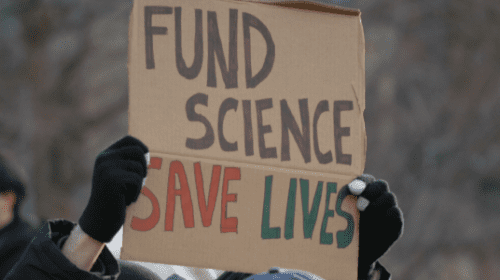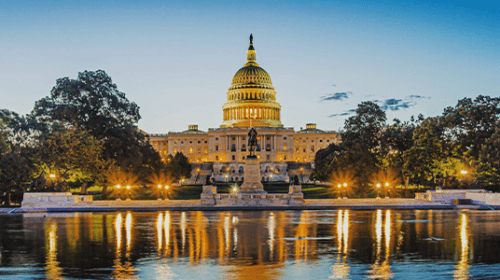You can’t go almost anywhere without seeing an alcohol reference or an advertisement for alcohol-related products. It’s no news—booze is everywhere.
But did you know that alcohol misuse is one of the leading causes of preventable death in the US? More than 178,000 deaths are attributable to excessive alcohol use each year.
Each year in April, we recognize Alcohol Awareness Month to provide education and raise awareness about the risks of drinking, understanding what a healthy relationship with alcohol looks like, and what you can do if you or your family member is struggling.
Understanding Alcohol
The Centers for Disease Control and Prevention (CDC) states that a standard drink contains 14 grams of pure alcohol. To put it into perspective, that’s roughly the amount of alcohol found in a typical 12-ounce beer, a standard 5-ounce glass of wine, or a 1.5-ounce “shot” of 80-proof liquor.
And to set the record straight, the type of alcohol doesn’t matter, but the amount someone consumes does. Here are various levels of drinking, according to the Dietary Guidelines for Americans:
Moderate drinking: consuming two or fewer drinks in a single day for men and one drink or less per day for women
Heavy drinking: consuming fifteen drinks or more per week for men or eight or more drinks per week for women
Excessive alcohol use: heavy drinking, binge drinking, underage drinking, and alcohol use by pregnant women
What is binge drinking?
Binge drinking is a pattern of alcohol consumption in which a person’s blood alcohol concentration (BAC) level is at 0.08% or more. Usually, this means five or more drinks on a single occasion for men or four or more for women.
Binge drinking in the United States:
- One in six adults binge drinks
- 25% of those do so at least weekly
- Most common among people 18-34 years old
- More common among men than women
- More likely for adults with household incomes of $75,000 or more
- Most common among non-Hispanic White adults
- The Midwest has the most binge drinkers
Binge drinking is the most common pattern of excessive alcohol use in the United States, but most people who binge drink are not dependent on alcohol.
Alcohol And Your Body
While alcohol awareness is growing, many still underestimate the potential dangers of drinking. It’s important to note that while excessive drinking heightens the risk of alcohol-related harm, even moderate drinking is associated with risks, including an increased likelihood of developing certain types of cancers.
According to the American Cancer Society, alcohol use accounts for about 6% of all cancers and 4% of all cancer deaths in the United States. Alcohol use is one of the most important preventable risk factors for cancer, as it’s linked to the following types: mouth, throat, voice box, esophagus, liver, colon and rectum, and breast.
Additionally, excessive alcohol use is associated with the following health problems:
- Chronic diseases
- High blood pressure
- Psychological disorders
- Unintentional injuries
- Violence
- Harm to a developing fetus if drinking while pregnant
- Sudden infant death syndrome (SIDS)
- Alcohol use disorders
The American Cancer Society Guideline for Diet and Physical Activity for Cancer Prevention says it’s best not to drink alcohol at all. However, people who choose to drink should limit their intake to no more than two drinks per day for men and one drink per day for women.
Alcohol’s Impact On Society
Alcohol is so normalized in today’s society that it can feel awkward and isolating to be a non-drinker. But with all the harm alcohol brings to people, families, and communities, we should be having the conversation more often.
Alcohol is a significant factor in a variety of societal issues, including:
Public health
Excessive alcohol consumption is linked to several health problems, costing billions in healthcare expenses annually.
Safety
Alcohol-impaired driving remains a major contributor to traffic accidents and fatalities. In 2021, 31% of all driving fatalities were attributed to alcohol impairment.
Crime and violence
Alcohol can exacerbate aggression and is associated with increased rates of domestic violence, sexual assault, and other crimes.
Economic impact
Lost productivity due to alcohol abuse and dependence negatively affects businesses and the overall economy.
Understanding Your Relationship With Alcohol
Whether we want it to or not, alcohol finds its way into our lives—but each person has a different relationship with it. Have you ever thought about yours?
Some people can drink in moderation, with no problems caused by their alcohol use. Others may drink heavily, either on special occasions or more regularly.
Practice responsible drinking
It’s essential to recognize how much and how often you drink, as your alcohol use can have negative effects on your well-being.
Safety first
Prioritize safety and plan when you’re going to consume alcohol. Don’t participate in any activities that could pose a risk to you or others while under the influence.
Stay close to your friends or family when drinking in public, and avoid going to places alone while under the influence.
Set boundaries
Set personal limits on the amount you’ll drink and stick to them. Don’t overindulge, and know that it’s okay to say no or to stop drinking whenever you want to.
Plan your ride
Since it can be challenging to know whether you’re sober enough to drive after drinking, always plan for a safe ride home. Designate a driver in advance or have a backup plan, like using rideshare services or public transportation.
Know your limits and pace yourself
Pay attention to how much you’re drinking and how it’s affecting you physically and emotionally. Know your tolerance level, and avoid exceeding it.
Being mindful and recognizing when it’s necessary to evaluate your drinking habits can help you maintain a healthy relationship with alcohol.
If you find it challenging to stop drinking once you start, or if your drinking is starting to impact your life negatively, it’s probably a good idea to take a closer look.
How To Know If You Have A Problem
Although drinking might be a significant part of your life, it’s crucial to recognize signs of problematic alcohol use. Here are some things to look out for:
- Do you need to drink more to achieve the same effect?
- Do you have difficulty controlling your drinking once you start?
- Does alcohol use negatively impact your work, relationships, or health?
- Do you experience withdrawal symptoms when you stop drinking?
Firstly, remember that it’s okay not to be okay. Many people who decide to stop drinking come to realize that alcohol was holding them back, and now, without it, they’ve discovered a whole new world of experiences. However, this journey isn’t always easy.
Navigating Life Without Alcohol
Being a non-drinker is not only possible, but it can also make your life enjoyable and fulfilling. Plus, it might save you some serious cash in the long run.
Social situations
Brainstorm alternative activities to enjoy at social events or for relaxation, such as board games, movie nights, cooking, volunteering, and pursuing hobbies.
When organizing alcohol-free events, establish clear expectations for your guests. Provide a variety of non-alcoholic beverages and snacks, and brainstorm ways to ensure everyone has a great time without relying on a booze buzz for entertainment.
Support and communication
When you first stop drinking, it’s normal to feel a little uncomfortable being around alcohol and people who drink. However, you don’t need to hide the fact that you don’t drink. It’s okay to be open about your decision to prioritize your well-being. You may want to evaluate your relationship if someone can’t support that.
Try having open and honest conversations with your friends and family about your alcohol preferences. Remember, “No.” is a complete sentence. You can politely decline drink offers or invitations to events where alcohol will be present if it makes you uncomfortable.
Non-alcoholic drinks
Although not for everyone, non-alcoholic beverages like mocktails, NA beer, and NA wine are great replacements for your drink of choice. Many bars and restaurants offer non-alcoholic drink menus, so ask about your options. And if you’re not interested, remember that water works just fine, too!
Resources and Support
If you or someone you know is struggling with alcohol abuse or addiction, there are local support groups or online programs that can help.
For a more comprehensive treatment in a controlled environment, Recovery Unplugged has inpatient treatment centers across the country:
If inpatient treatment isn’t for you, check out our virtual outpatient treatment program (IOP). It’s an excellent choice for anyone seeking personalized and discrete programming to address their struggles with alcohol.
Other resources:
SAMHSA National Helpline 1-800-662-HELP (4357)
If you or someone you know is in crisis, call or text 988 or chat online.
The focus during Alcohol Awareness Month is to spread knowledge and promote responsible choices. It’s a time to offer support to those in recovery and people seeking to improve their relationship with alcohol.
If you’re curious about life without alcohol but you’re not entirely sold on sobriety, try an alcohol-free week or month to see how it impacts your overall well-being. Who knows, you might discover a whole new way of life.

























